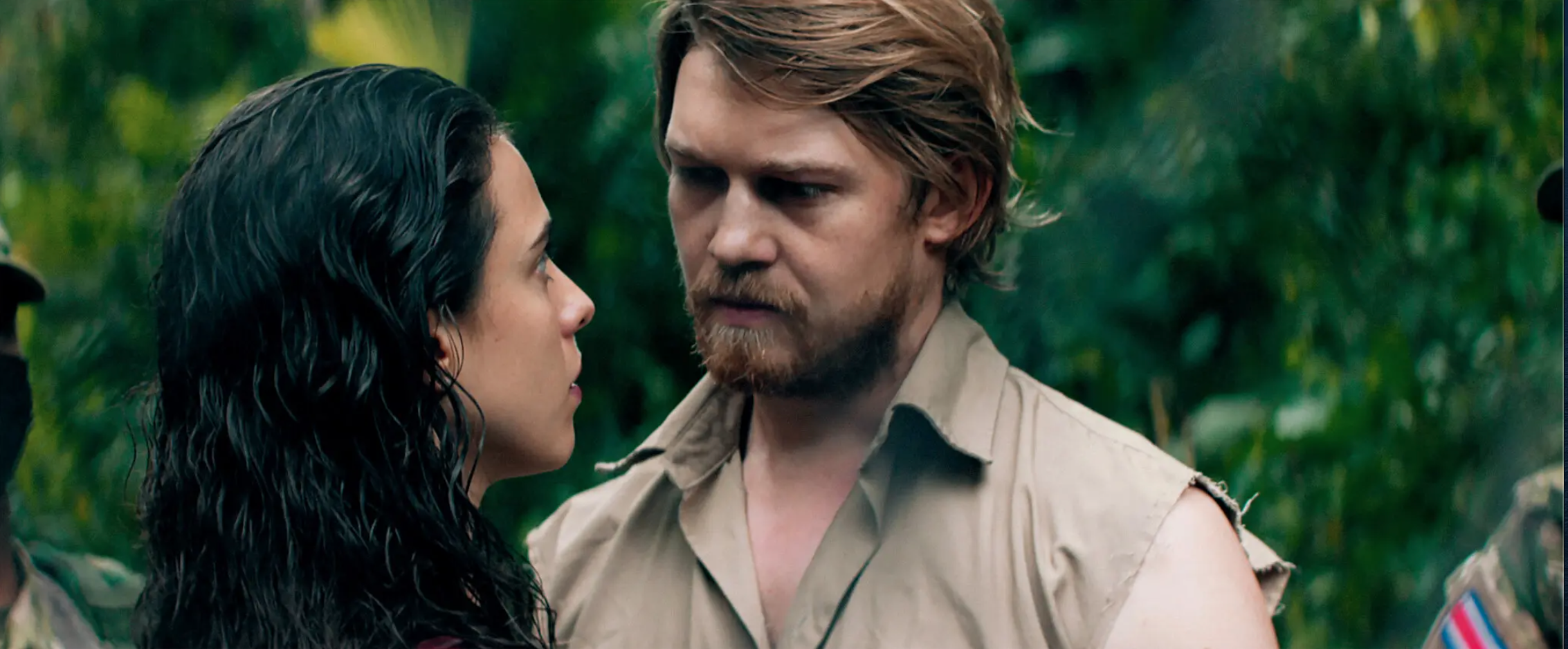‘Stars at Noon’ Review: Claire Denis’ English-language ‘White Material’
A24
This was the last film that I saw at Cannes and my most anticipated film by far. Claire Denis is one of my favorite filmmakers so it comes as no surprise that attending the premiere of ‘Stars at Noon’ was literally one of the best days of my life.
The film is a romantic thriller set in modern-day Nicaragua. It follows the relationship between American, Trish (Margaret Qualley), and British businessman, Daniel (Joe Alwyn). As their relationship develops, secrets come to light that force them to flee the country amidst a hostile political climate.
Right off the bat, ‘Stars at Noon’ reminded me of Denis’ 2009 drama, ‘White Material’. Both center around white expatriates in countries of predominantly people of color (i.e. Nicaragua or a region in Africa). As ‘White Material’ is one of my favorite films to analyze (I would say there is a notable difference between a favorite to analyze and a favorite to watch), ‘Stars at Noon’ is brilliantly layered and an absolutely thrilling story to parse through. As such, this is less of an opinion of the film as it is a mediocre post-first-time viewing dissection.
I’ll start with the the film’s construction of reality. Despite setting most of her films in a close reality — ‘Stars at Noon’ is set during the Covid-19 pandemic — there is an absurdist element to Denis’ storytelling. Even the title of this film suggests a world off-kilter, an unexplainable phenomenon, an ominous warning. Throughout the film, I would often find myself questioning the plot: “How did that character get there?” “How did they know that information?” Working within the bounds of our normal reality, there were times where I felt as though there was a physical impossibility to her characters. It seemed impossible for them to be in certain places or know certain information while playing in the confines of the real world. Even so, this unfeasibility is not a storytelling flaw or fantastical twist. Instead, it is evidence that Denis strictly places the viewer in the protagonists point-of-view. We truly only know what the character knows, no more, no less. As such, when things don’t seem add up for Trish or Daniel, we are just as terrified as they are. It is the reason why when I saw the CIA agent (Bennie Safdie) reappear in places I wasn’t expecting, my blood ran cold.
Denis’ use of death adds to this chilling atmosphere. Her filmmaking has an apathy towards death that is particularly striking. Three young men in a boat are shot down from what looks like out of nowhere. Instead of holding on them for a moment, the camera and the two protagonists are off again. No tears, no faces filled with shock. It is as if their death were inevitable and unavoidable and, as a result, unimportant. This is what creates terror. As the gunshots fired, you could feel everyone in the Grand Théâtre Lumière suddenly freeze. People who were potentially checked out of the scene was now laser-focused on the story.
I can’t help juxtaposing Denis’ use of violence to that of films like ‘Star Wars’. Luke Skywalker can run through a corridor full of gun-weilding Stormtroopers and I won’t spend a second questioning his survival. However, in Denis’ world, I constantly felt like the hotel concierge, the taxi driver, and the sandwich shop owner all had the capability of killing off a main character. She creates a vulnerability to her protagonists (or perhaps a strength in her auxiliary characters?) that puts me in a perpetual state of fear. I love it.
Now, I really need to mention the costumes. Like ‘White Material’, costumes hold great deal of importance to the characters in the story. Trish is solely seen with a mismatched and somewhat child-like wardrobe. One of thin materials and flowing fabric made to cater to the hot, tropical weather. Daniel, on the other hand, sports a three-piece white suit for the whole film. From the outset, we know he is a new arrival and wealthy. The fact that he is wearing layers at all is an indication that the heat is no concern to him and air-conditioning is easily accessible. After he is shot in the stomach, the white suit is stained bright red. It’s a stunning visual symbol of a man who, despite him declaring his good intentions, is flawed and morally-corrupted.
Overall, ‘Stars at Noon’ is a story of white people settling in a developing country and contributing to its corruption. This is not only true for Trish and Daniel, but their home countries of the United States and England. Throughout the film, native Nicaraguans mention the United States’ role in Nicaragua’s political corruption as a constant reminder of their fault. Daniel leaving his phone with the taxi driver who is ultimately murdered is direct evidence of the role that Western countries play in the daily life of developing countries. The stronghold of the Western world looms large throughout the film — it is only U.S. dollars that hold any value, not córdobas — and none of the Western characters do anything to acknowledge their role in it.
‘Stars at Noon’ does a lot without handholding you throughout the story. It leaves the the viewer to fill in the gaps and construct their own meaning of the film — something that seems to be increasingly rare in cinema. After winning the Cannes Grand Prix (the prize that is only second to the Palme d’Or), I hope that ‘Stars at Noon’ has a successful United States presence where ‘White Material’ did not.
(Originally published on May 31, 2022.)
